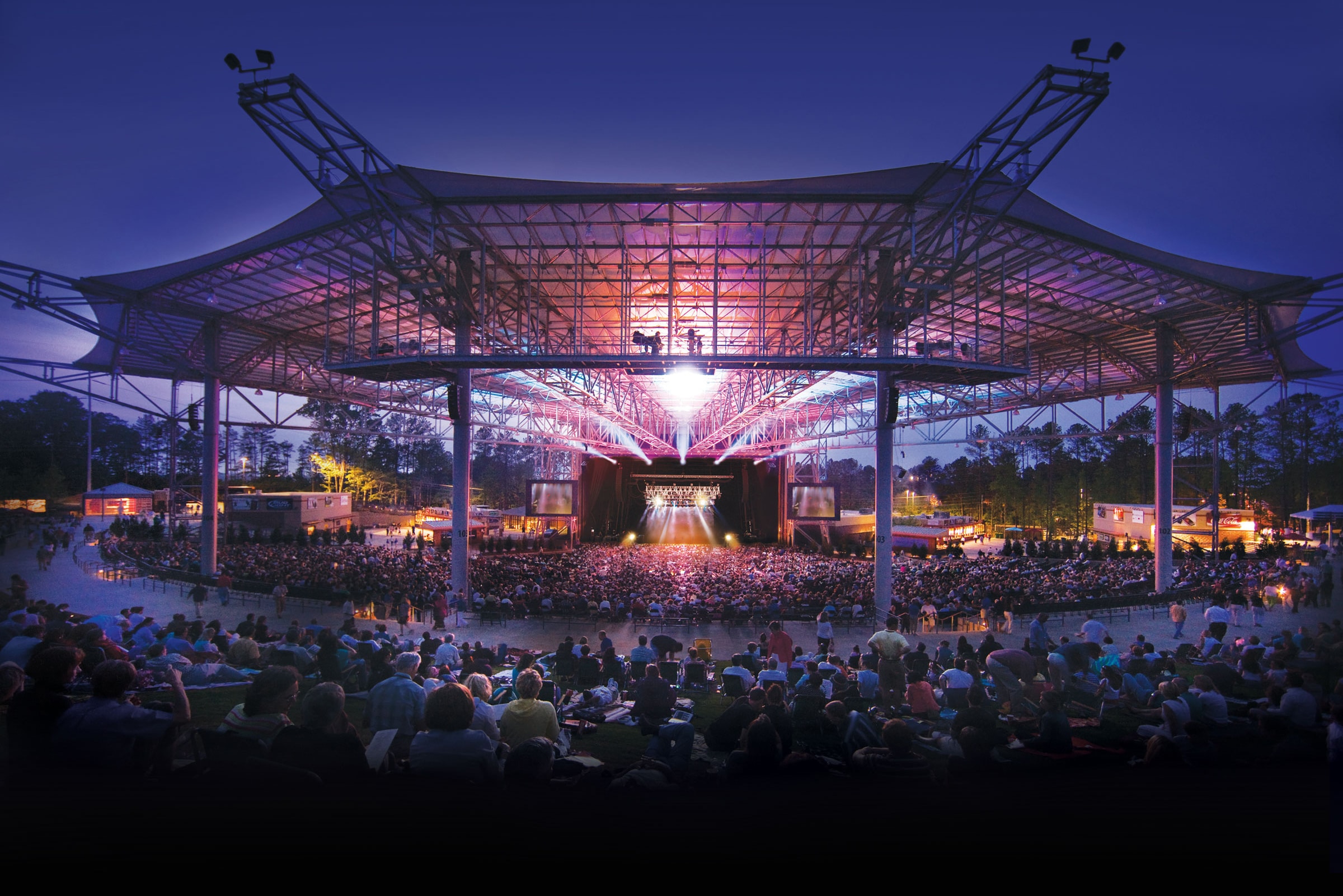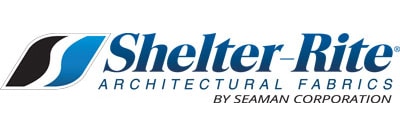Story at a glance:
- Architectural fabric structures may be air-supported, pre-engineered frame, or custom-designed tension structures.
- Fabric structures are often a convenient solution for large, open spaces.
When a client approaches you to begin a new project, do you consider recommending an architectural fabric structure? You may be reluctant to suggest this option because you aren’t thinking beyond the tent structures intended for temporary use. But in my experience fabric structures offer many unique possibilities, and with advanced fabric technology they can be a beautiful and permanent architectural showpiece.
In this article we explore the types of architectural fabric structures intended for long-term and permanent use, as well as the benefits.
Understanding the unique possibilities of an architectural fabric structure will help you consider this as an alternative to a conventional brick and mortar building.
Types of Architectural Fabric Structures
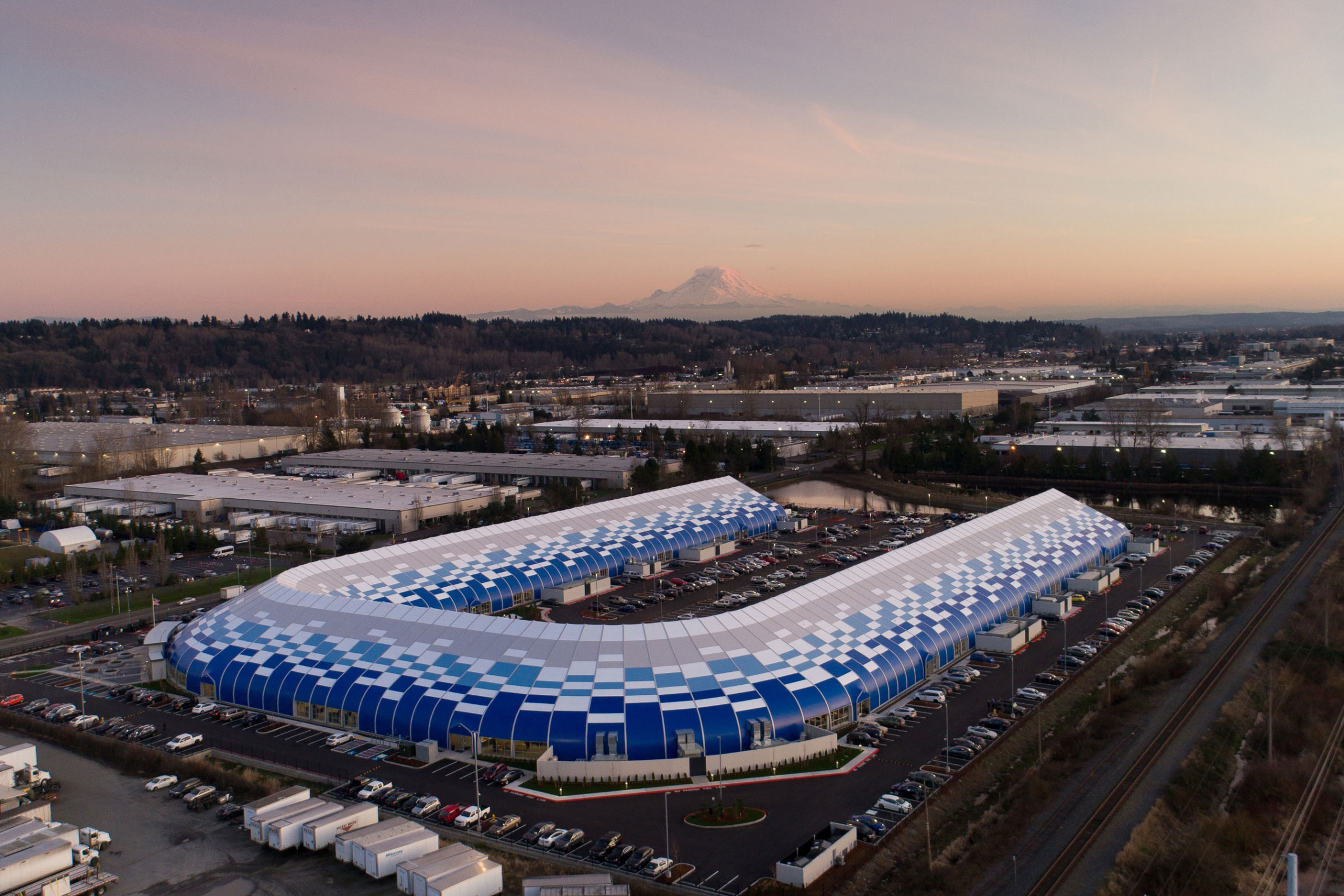
This 225,000-square-foot, custom-designed, clear-span structure was fabricated with Shelter-Rite architectural fabric by Seaman Corporation. The option to build a fabric structure instead of brick-and-mortar building provided a high-tech sustainable solution for their growing company and was completed in less time and within budget. Manufactured by Sprung Structures. Photo courtesy of Shelter-Rite
When considering an architectural fabric structure, you have three types to consider: air-supported, pre-engineered frame, and custom-designed tension structures. Each type has its own set of advantages and disadvantages you should consider before moving forward with your project.
Air-Supported Structures
Air-supported structures use an exterior architectural fabric skin supported by internal air pressure. The architectural fabric skin attaches at the perimeter (usually at ground level), and the structure inflates with the use of air blowers—no frames required. Air structures require high strength, flexible materials, and PVC coated polyester fabric.
The main advantages of an air-supported structure include:
- Most economical way to cover a large clear span area
- Easy and fast to install
- Options for insulation
- Seasonal applications
- Uses high end, self-cleaning architectural fabrics that will last more than 20 years
The main disadvantage of air-supported structures is that you must maintain a positive internal air pressure in the structure. This requires air locks to enter and exit the structure. Blowers must switch on automatically to maintain the internal air pressure. It is also a good idea to have a backup power supply so the blowers can stay on during a power outage.
Pre-Engineered Frame Structures
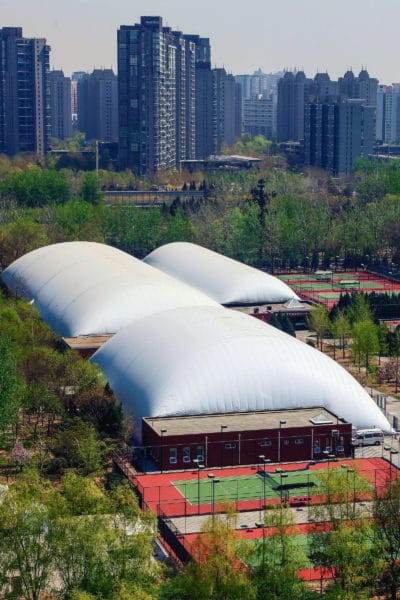
Pre-engineered frame structures have either a steel or aluminum frame covered with an architectural membrane. The metal frames are either arches or trusses engineered to be a certain length and spaced a specific distance from one another.
Depending on the design of the pre-engineered structures, strength requirements for the architectural fabric can vary. Low strength PE fabrics, PVC laminates, and coated PVC fabrics are all used to create these types of structures.
Advantages of a pre-engineered frame structure include:
- Lower cost as compared to conventional buildings
- Easy and fast to install
- Optional open-side for easy access
- Easily incorporate an interior liner and insulation package
- Uses high-end, self-cleaning architectural fabrics that will last more than 20 years
The main disadvantage of pre-engineered frame structures is that they are more expensive than air-supported structures, especially for large spans.
Custom-Designed Tension Structures
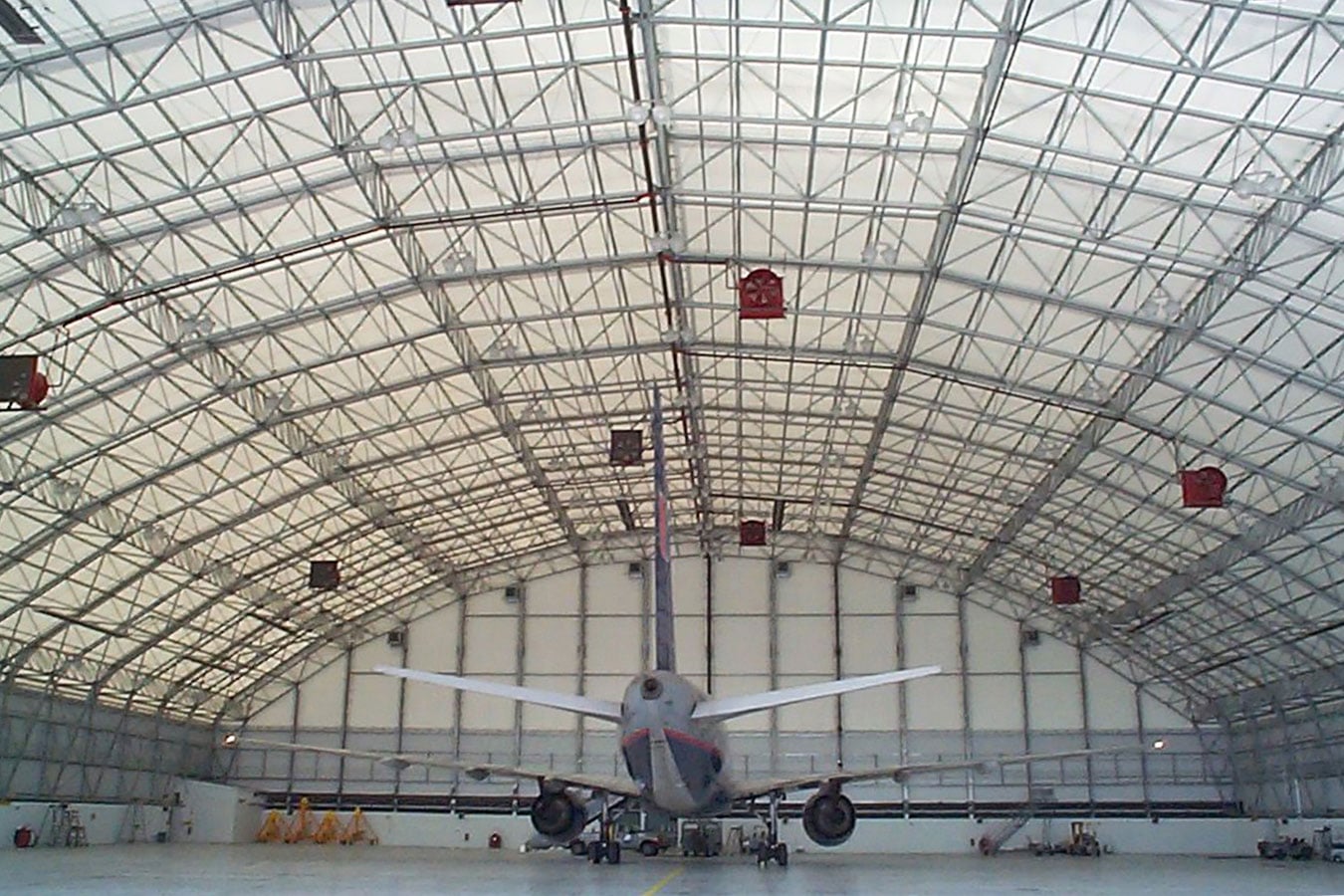
A huge, clear span structure fabricated with Shelter-Rite architectural fabric by Seaman Corporation provides a cost-efficient way to meet the need for a building, which was used to maintain some of United Airlines’ largest jet airplanes and is now owned by Delta Air Lines at Boston Logan Airport. Manufactured by RUBB Building Systems. Photo courtesy of Shelter-Rite
Custom tension structures are created based on an architect’s concept and produce a custom, one-of-a-kind structure. The design includes interior arches, masts, and cables to support the architectural membrane. Often the structure incorporates 3D shapes that create a statement. Examples of custom-designed tension structures include stadiums, amphitheaters, and canopies. Because of the varying sizes, the architectural membrane used can range from low strength to very high strength. Architectural fabrics used on custom tension structures include PVC coated polyester fabrics, PTFE coated fiberglass, and ETFE films.
Advantages of a custom-designed tension structure include:
- A custom structure not otherwise constructed from conventional building materials
- Great open space under the structure
- High-light transmission brings in natural light
- Uses self-cleaning architectural fabric that will last more than 20 years
The main disadvantage is that some of these custom-designed tension structures can be very costly, but since there is no alternative way to create these types of structures, cost is typically not a consideration, and often the other benefits out weight the expense.
6 Benefits of Fabric Structures

An entrance canopy featuring Shelter-Rite architectural fabrics retrofitted by Signature Structures protects visitors from the weather conditions and aesthetically matches the roof of the Van Wezel Performing Arts Hall in Sarasota, Florida. Photo courtesy of Shelter-Rite
1. Fabric structures offer an easy solution for large, wide-open covered spaces.
Architectural fabric structures requiring a large interior, wide-open space are known as clear span structures. They do not require internal support columns for reinforcement in the middle of the structure because the high strength architectural fabric only weighs between .15 to .20 pounds per square foot. The clear span width of an architectural fabric structure can range from 50 to 300 feet.
Many structures require the use of a clear span design, like participative sporting facilities for football, soccer, tennis, baseball, and swimming pools; sports stadiums; amphitheaters; airport terminals; rail stations; churches; and other public gathering locations.
Many industrial applications such as warehouses, aircraft hangers, and bulk storage facilities also require a clear span structure. If you have a need in your design for a wide space that is clear of posts and beams, an architectural fabric structure is a good choice.
2. Fabric structures reduce construction and installation time.

A large athletic pavilion in the city of Martensville, Saskatechewan, Canada, constructed as a dual-purpose athletic facility for use by the local high school and the city, regardless of the outdoor elements. Manufactured by Sprung Structures. Photo courtesy of Shelter-Rite
The time required to design, manufacture, construct, and install a fabric structure is substantially shorter then that required for a conventional building. Many fabric structures are considered “pre-engineered” with most of the engineering already complete. The architectural fabric is pre-fabricated at the manufacturer and arrives at the job site in large panels, ready to cover thousands of square feet at one time. In addition, jobsite work like moving earth, pouring foundations and floor slabs, and erecting metal frames, can all take place at the same time as the production of the pre-fabricated panels.
We recently supplied fabric for a large project that involved a company needing 225,000 square feet of office space, as quickly as possible. After reviewing their options they decided on a high end, architectural fabric structure, mainly because of the speed of installation. After the contract was awarded the manufacturer of the pre-engineered, tension frame structure was able to fabricate and install in six months. The trades were all finished and the customer took occupancy within 11 months. This state-of-the art fabric structure met their needs and saved the company money and time. From the inside you would never know you are in a fabric structure.
3. Fabric structures give you the opportunity to create one-of-a-kind, eye-catching, and high-profile structures.
Architectural fabric structures can be high-profile and designed to incorporate high peaks and sweeping lines. A good example of this is the main terminal at the Denver International Airport. Fabric structures can also use a wide variety of colored fabrics; in fact, PVC-coated architectural fabrics can be color matched to meet any architect or building owners wishes. Often customers request a color match to coordinate with corporate or school colors. Designs can include any number of different colored fabrics used on the same structure, creating a dynamic appearance.
Almost clear and high-light transmission white fabrics can also be produced, which allow a lot of natural sunlight to enter during the day time and produces a glow when the interior lights up at night. Many fabric structures incorporate both high-light transmission fabrics with panels of opaque fabrics. This allows for some sunlight while still controlling the amount of thermal gain.
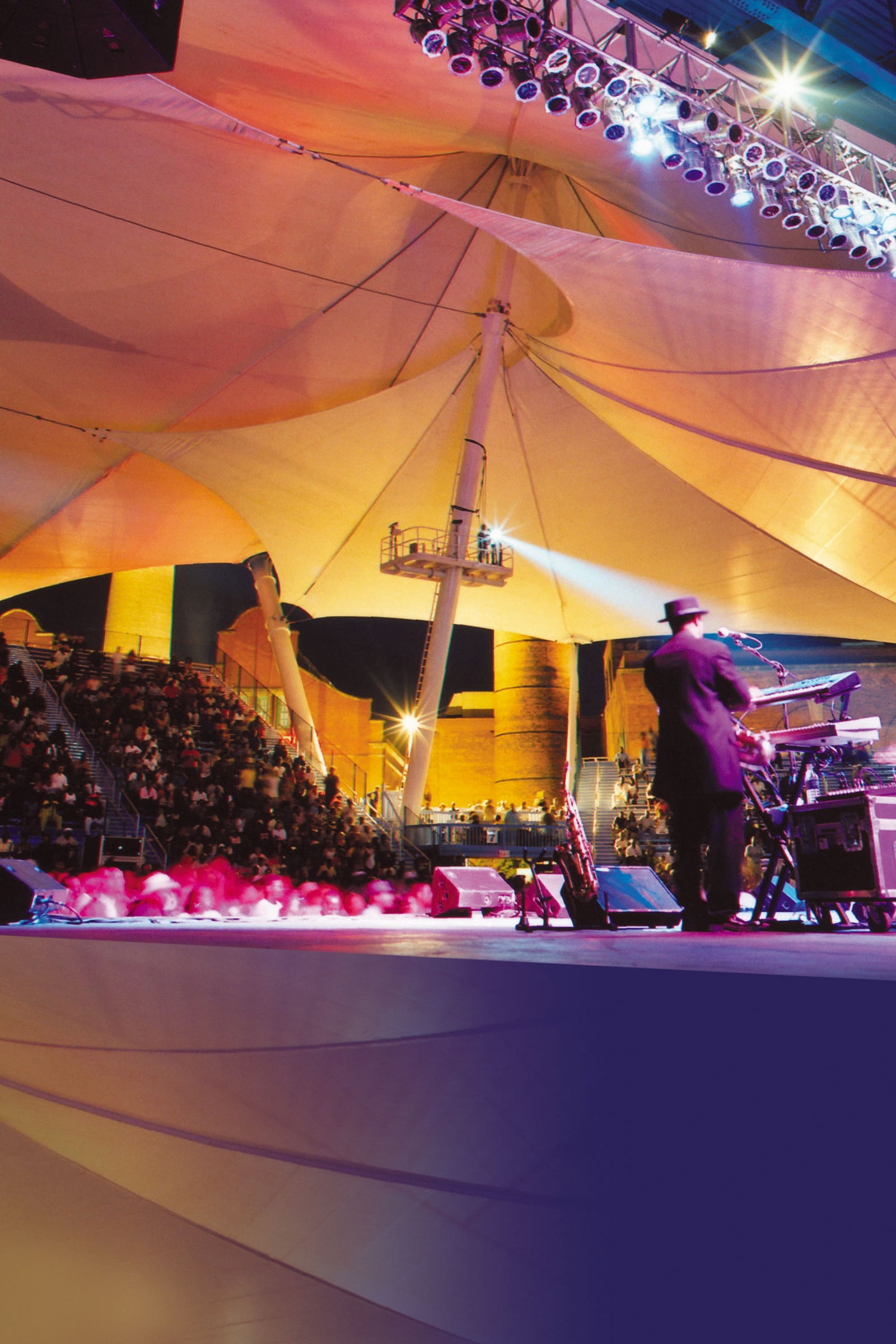
This custom-designed tension fabric structure using Shelter-Rite architectural fabric by Seaman Corporation. This durable and aesthetically dramatic structure, owned by Nautica Stage in Cleveland, Ohio, is an outdoor venue for concerts. Photo courtesy of Shelter-Rite
4. Fabric structures offer permanent, seasonal, or relocatable options.
Most architectural fabric structure designs are meant to be permanent. They can have an internal metal frame, use an internal mast and cables, or use only air to support the architectural fabric skin. The architectural fabric itself can last 20 to 30 years and be replaced with a new skin after that time, just like shingles or single-ply roof membrane. The metal frames, masts, and cables will last 50-plus years. Permanent fabric structures are frequently insulated with fiberglass or other lightweight insulation and must meet all local fire and safety codes, just like conventional buildings.
A great benefit of architectural fabric structures is the ability to design them to be seasonal or semi-permanent structures. Air-supported fabric structures can easily install over artificial sports turf fields to provide a recreational facility during the winter. The structures can come down in the spring and stored for the following season.
Architectural fabric structures designed to be permanent can also relocate to a new site if needed. This simply requires a foundation at the new location for reinstallation of the fabric skin and any supporting frame work.
5. Fabric structures are cost-effective.
Architectural fabric structures are frequently more cost-effective to cover a given space, especially if a large clear span structure is required. The cost of a fabric structure will vary depending on the type of fabric structure you are considering; air-supported fabric structures and pre-engineered frame structures will cost less than a custom designed fabric structure.
Other factors affecting cost include selection of the architectural fabric, the use of insulation, lighting, and HVAC systems. In all cases, when you do a side-by-side comparison of a conventional brick-and-mortar building to an architectural fabric structure of the same size, the fabric structure will always be a lower cost. In some cases the savings could be as much as 50% or more.

This L-shaped frame structure serves as the headquarters at Sprung Structures in Alberta, Canada. Installed in 2005 the Tedlar exterior shows very little difference in color to when it was installed. Photo courtesy of Shelter-Rite
6. Fabric structures are energy-efficient and sustainable.
Architectural fabric structures have many sustainability benefits. The first factor to consider is that a fabric structure is extremely lightweight, enabling you to cover very large areas with very little mass. It takes less raw materials and less energy consumption to produce architectural fabrics and deliver them to the building site. That said, these architectural fabrics will last 20-plus years, so you get a long-life with low mass and energy consumption.
Many of the key parts of an architectural fabric structure are recyclable or reusable at the end of its life. For many of these structures, the majority of the mass is the metal frames or steel masts and cables. These metal parts (steel or aluminum) are easily recycled. Many of the architectural membranes are also recyclable, but more frequently these items are repurposed for other applications.
If properly designed, architectural fabric structures can be as energy efficient as conventional buildings. Designs with full insulation and significant translucent fabric panels allow plenty of daylight to enter the space and reduce lighting needs.
Consider an Architectural Fabric Structure for Your Next Project
Considering the benefits and the variety of structures available, I feel a fabric structure is an excellent alternative to a brick and mortar building. It is ideal for large groups to gather under an enclosed space to work, play, watch, and socialize. Put aside your reluctancy to suggest an architectural fabric structure and explore the possibilities for your next project. What’s holding you back?

